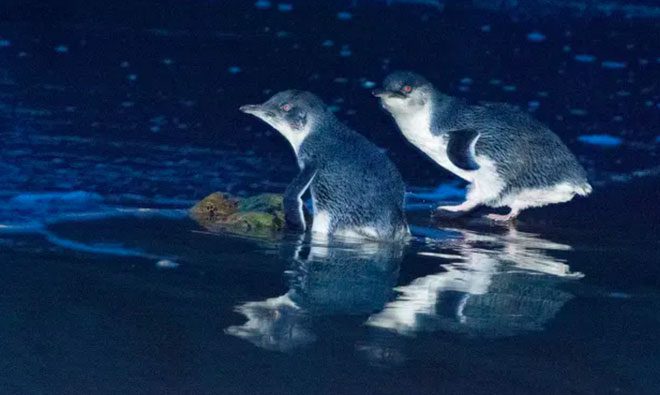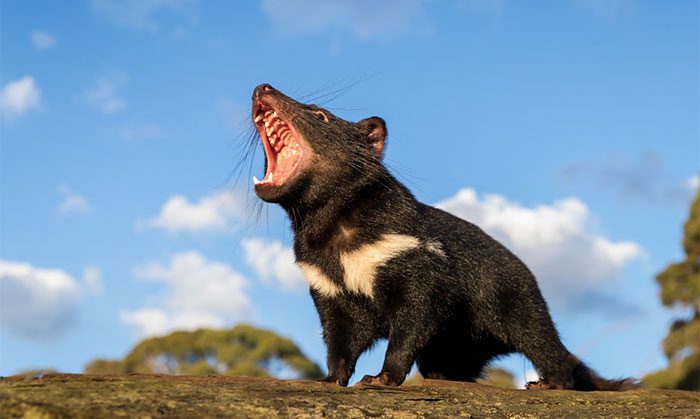The Tasmanian Devil – a species of carnivorous marsupial – was introduced to Maria Island, located off the eastern coast of Tasmania, for population conservation. However, they have devastated the local bird ecosystem.
According to BirdLife Tasmania, the effort to conserve the Tasmanian Devil by relocating them to Maria Island, Australia has come at a cost to the local bird species – the little penguins have been completely eliminated.
The goal was to preserve the Tasmanian Devil population by creating a geographically isolated population to prevent the spread of facial tumor disease.
As a result, the 28 devils released on the island in 2012 and 2013 increased to approximately 100 by 2016. However, the population of little penguins has steadily declined since the Tasmanian Devils were introduced.

Little Penguins – a species eradicated from Maria Island, Australia by the introduced Tasmanian Devils. (Photo: Eric Woehler).
This 116 square kilometer island off the eastern coast of Tasmania was once home to 3,000 pairs of little penguins about a decade ago. According to BirdLife Tasmania, a recent survey revealed that penguins have completely disappeared from the island.
Dr. Eric Woehler, who works for BirdLife Tasmania, stated that the decline in the penguin population is a disappointing but not surprising outcome.
“Whenever humans intentionally or unintentionally introduce mammals to oceanic islands, the outcome is always the same – mammals have a catastrophic impact on birds,” he said.

Tasmanian Devils were relocated to Maria Island to preserve their population from facial tumor disease.
A report conducted in 2011 predicted that the introduction of carnivorous marsupials like the Tasmanian Devil would have a “negative impact on the populations of little penguins and native seabirds.” Penguins in Australia are facing significant threats due to human activities, pets, and wildlife.
Another study in 2020 indicated that Tasmanian Devils have also decimated short-tailed fish populations on Maria Island. The Cape Barren Geese on Maria Island, which are ground-nesting birds, have had to attempt nesting in trees to avoid being preyed upon by Tasmanian Devils.
A decade ago, scientists introduced the Tasmanian Devil population to Maria Island because they did not fully understand the impact of the facial tumor disease on this species. Research published in 2020 showed that the spread of the disease appears to have slowed.
Maria Island was initially considered an ideal location for the Tasmanian Devil due to its lack of public transport and major roads, as well as the presence of macropod species for them to prey upon. Additionally, the island is home to Tasmanian pademelons, Forester kangaroos, and Bennett wallabies.





















































